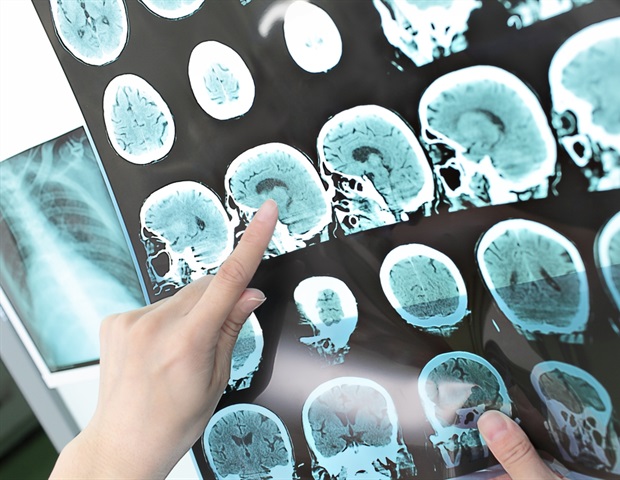
Virtually half of sufferers who skilled a stroke in the appropriate cerebral hemisphere later develop a really uncommon symptom: they lose the power to understand what is occurring within the left aspect of house.
Because of this, they have an inclination to eat solely the appropriate aspect of their plate, ignore folks on their left, and have nice problem discovering their approach round. This dysfunction, often called hemispatial neglect, doesn’t contain fundamental visible skills, which stay intact.
These sufferers see very nicely. The issue lies elsewhere! They aren’t conscious of part of their setting, not as a result of they don’t obtain visible data, however as a result of they aren’t taking note of it. The therapy of those sufferers consists, in a approach, of re-educating their consideration skills.”
Paolo Bartolomeo, Neurologist and Researcher, Paris Mind Institute
How might we probably not concentrate on parts of actuality that we do understand? To reply this query, we have to perceive the character of the connection between consciousness and a focus. Researchers have been making an attempt to formalize it for a few years, however a number of competing theories coexist, none of which has prevailed. To search out out extra, Paolo Bartolomeo and Jianghao Liu, a doctoral pupil within the PICNIC group, determined to place these theories to the check.
Gabor to starboard
“We needed to explain the interactions between consideration and aware notion within the finer particulars, not solely to elucidate consideration disturbances in sure cognitive problems but in addition to higher perceive human consciousness normally, ” explains Jianghao Liu. Scientific research inform us that spotlight is critical, although not adequate, for aware notion, however we did not understand how that is translated within the mind. Thus, we tried to uncover the mechanisms of consideration processing in frontoparietal networks.”
To make clear these questions, the researchers targeted on so-called exogenous consideration, i.e., consideration targeted on environmental stimuli. Standard neuroimaging methods corresponding to fMRI and EEG are inadequate to acquire exact knowledge on mind exercise throughout cognitive duties. The group, due to this fact, used intracerebral electrophysiological recordings from 13 epileptic sufferers who had been implanted with deep mind electrodes to deal with drug-resistant epilepsy.
Members within the examine have been requested to carry out a cognitive process that concerned detecting a goal referred to as a Gabor patch, which might grow to be barely discernible by altering the distinction of the black and white bars composing it. The goal appeared on the left or proper of a display and was preceded by a visible cue (a easy black dot) – both appropriate (saying the aspect on which the goal appeared) or deceptive (saying the flawed aspect). In some circumstances, the Gabor patch didn’t seem in any respect.
Supporting neural proof
“This experiment allowed us to find out that manipulating the individuals’ consideration through the visible cue might modify their capability to consciously understand the Gabor patch and describe what they’d seen, explains Jianghao Liu. Their consideration capacities have been both inhibited or elevated tenfold relying on the stimuli. On the similar time, we noticed that particular neural networks have been concerned within the various kinds of interplay between consideration and aware notion.”
Extra particularly, by electrophysiological recording, the researchers recognized 5 clusters {of electrical} exercise related to the upkeep and redirection of consideration in frontoparietal networks. They then used white matter tractography, an imaging approach, to encure that these clusters matched the structure of anatomically observable neural projections. Lastly, they checked the robustness of those outcomes utilizing a pc mannequin to make sure that the neural dynamics they noticed weren’t particular to epileptic sufferers and may very well be generalized ultimately.
“For the primary time, now we have been in a position to map the areas of the mind concerned within the interplay between consideration and aware notion, says the researcher. This can be a nice advance: sure present hypotheses declare that aware notion and a focus are two features completely remoted from one another and depend on totally different networks. Our knowledge reveals the other.”
These interactions between consideration and aware notion most definitely form our notion of the world, as our consideration is consistently drawn to new occasions, huge or small, in our speedy setting. “Now we wish to decide whether or not consideration to endogenous occasions – in different phrases, occasions arising from our ideas, our inside sensations, our internal life – might additionally have an effect on consciousness, concludes Paolo Bartolomeo. In any case, our capability to concentrate to ourselves is as fascinating as our capability to understand the remainder of the universe.”
Supply:
Journal reference:
Liu, J., et al. (2023) Fronto-parietal networks form human aware report by consideration achieve and reorienting. Communications Biology. .